How to Set Up a DJ Mixer in No Time
DJ mixers are integral components of many DJ setups. They come in a huge assortment of shapes and sizes with various different specialties, headline features and components. DJ mixers are a necessity of any setup that uses decks or turntables, regardless of whether they’re CDJs or vinyl decks.
The only time you won’t need a mixer is if you own a controller, as controllers have mixers built into them. Still, you need to know how to set up a DJ mixer properly.
Having a basic knowledge of tech and equipment is vital as a DJ. You don’t need a degree in electrical engineering or sound production but you do need to have some sense and understanding of how to set things up, operate them and troubleshoot any errors or issues.
At venues and clubs, yes, there will be a sound assistant or engineer on hand most of the time but who is responsible in making sure everything is working at a house party or small event? Often, it is yours.
What do DJ Mixers Do?
It might feel like an overly simple question but one not everyone will know the answer to. Simply put, a DJ mixer allows you to mix two or more signals from different sources before outputting them to a sound system or speaker system.
A DJ mixer is sort of a middle-man, you send it a signal with audio from a source e.g. a vinyl deck or CDJ, it takes that signal and allows you to control it with its functions – EQ, volume, etc – before sending it on its way again through its output.
Basically, then there is nothing tricky or misleading about the name ‘mixer’, this is exactly what a DJ mixer does. It takes multiple signals, mixes them and then sends them out as one stereo ‘mixed’ signal for playback.
Anatomy of a DJ Mixer
DJ mixers have changed from very simple two-channel mixers which can exclusively handle vinyl or other analog inputs to much more advanced multi-channel mixers brimming with extra features and components.
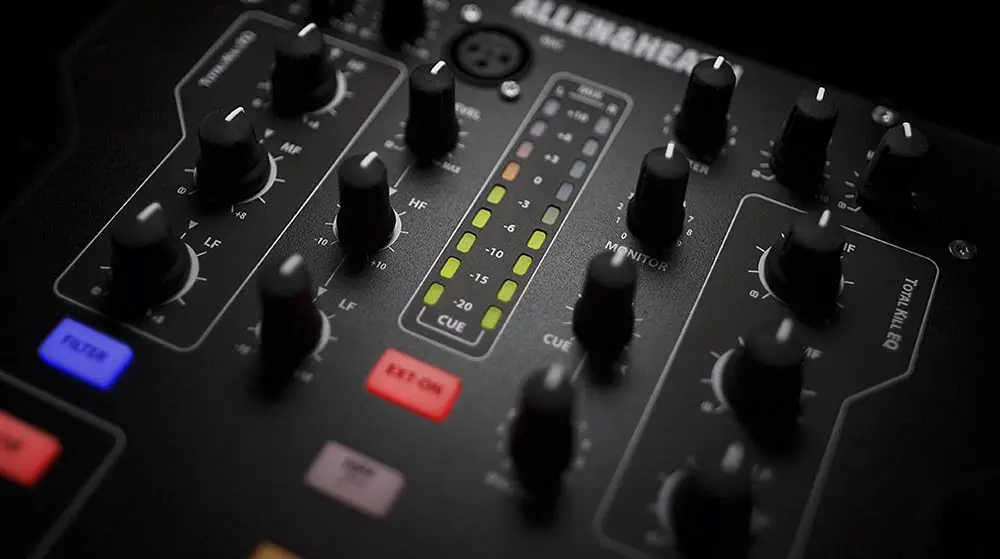
Inputs and Outputs
As we’ve gone over, a mixer takes sources via inputs and sends them via outputs. Each and every mixer will, therefore, have inputs and outputs – they’re absolutely rudimental and totally necessary for the construction of any mixer.
An input is used to connect a deck or other audio source. There are two main types of input found on most DJ mixers:
- Phono – Phono is for older analog sources and this will be where you connect vinyl turntables.
- Line – Line is for newer digital devices, e.g. CDJs.
These will usually be separated and there might be a little toggle button near the input which allows you to select whether you’re using line or phono inputs.
It’s crucial to get this right when you set up your mixer, vinyl will not work properly if you connect it to line and vice-versa with CDJs connected to phono.
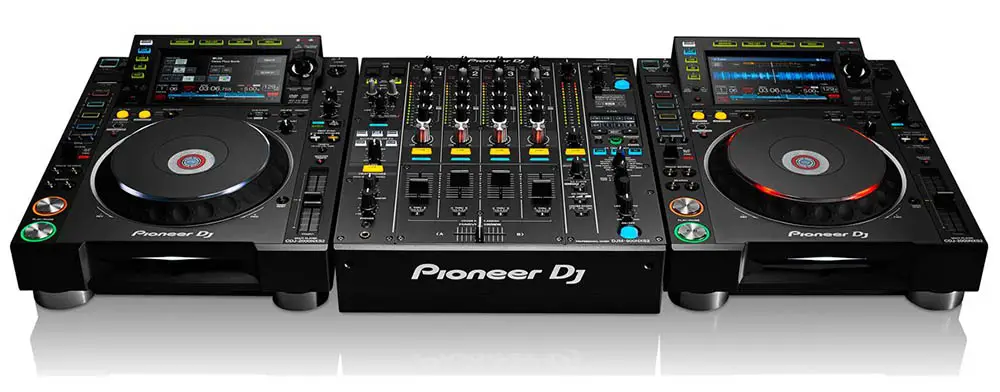
Outputs are a lot simpler and there will usually be at least two:
Master – This is your main output, it will connect to your speaker system which might either be an amp-rack run by a DSP, if it’s a very large club or event sound system, a HiFi system, a PA speaker setup or a smaller powered speaker setup.
You will need to make sure you have the right output cables for the speaker setup you’re using. These might be XLRs for higher-end modern mixers but usually, a master output uses RCA cables. Mixers with XLR outputs will usually have RCA outputs too.
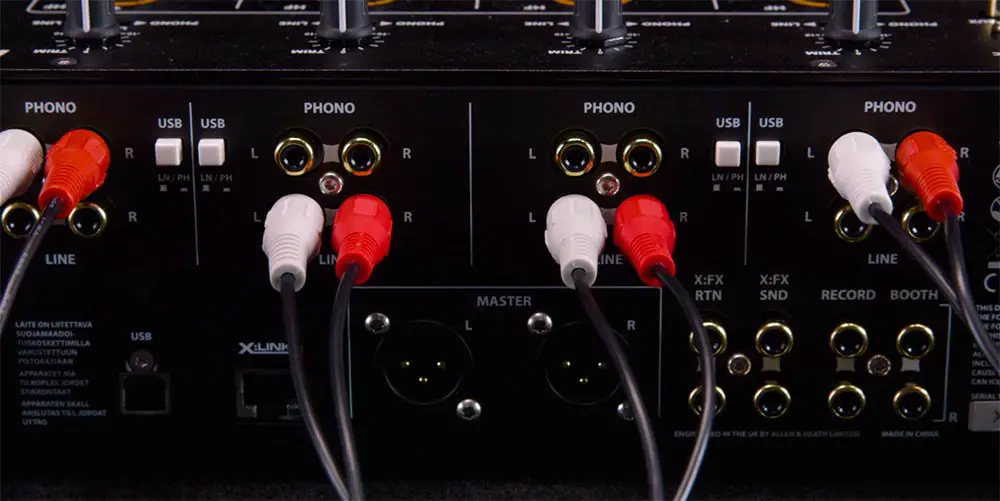
RCAs should be easy to connect to most smaller sound systems either into an amp if you’re using passive speakers or directly into the speaker in the case of powered speakers. You might need an RCA to jack or mini-jack converter if you’re going into powered speakers, though.
Booth – This secondary output is for your monitor speakers if you have some. Monitor speakers sit inside the DJ booth/next to the DJ and allow him or her to hear the same mixed sound as is coming out of the main sound system. Booth outputs will nearly always be RCA or sometimes jack.
Rec – This output allows you to connect to a digital device like a recorder, hence the name rec. It doubles up as another output if it’s needed in rare instances or if another of the outputs fails.
Faders
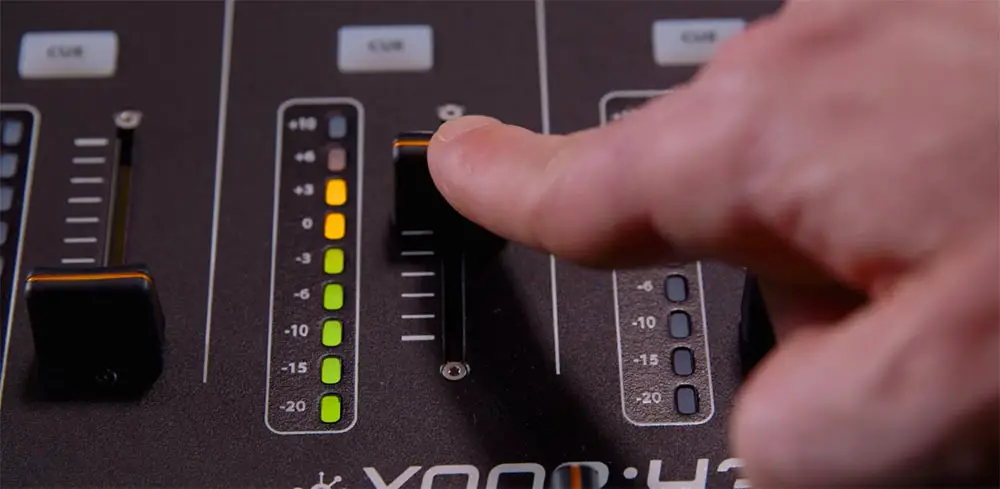
Faders come in two varieties, crossfaders and channel faders. The crossfader has lost some relevance now DJs use more than 2 normally digital decks but still, for many, it’s a crucial part of a DJ mixer and one of the most fun elements of it to operate.
Crossfaders fade across two tunes, they follow a scale that dictates how much of one tune fades out as the other fades in depending on the position of the fader. Crossfaders on mixers with more than 2 channels have to be assigned. If you use a crossfader, make sure you’ve selected which two decks you want it to control.
Channel faders are simple, they adjust the volume of a channel. It’s worth noting that these are in no way related to gain controls and the two aren’t interchangeable.
Gain
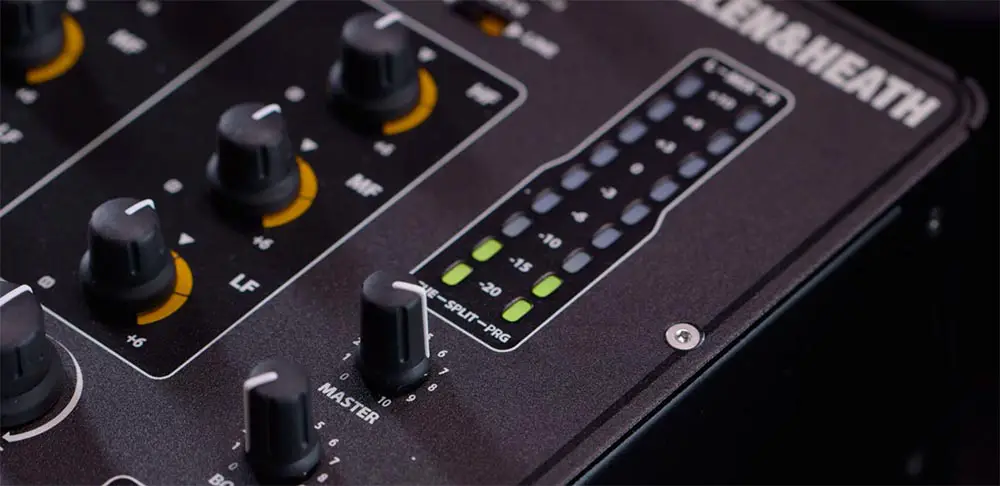
Gain controls are very important. They will fundamentally alter the audio that is sent through the master. The purpose of gain is to increase the volume of your channels to a sensible level before it goes to your speakers. Too little gain and your speakers will have to work overtime to compensate and ramp up the volume. Too much gain and your signal will be too loud and will distort.
Usually, setting up gain is quite simple. Set it at a quarter and check your channel volume, it’ll likely be too low. Turn it up until the levels hit the yellows, not the red. If they hit the top of the meter then you’re clipping the signal which will lead to distortion.
Gains should be left as they are throughout a set with one exception. Sometimes, a tune will be much quieter than another, say if it was released a while ago or isn’t high quality. You can adjust the gain up to compensate for lacking volume if you need to in this situation but make sure you turn it back once you load a louder tune.
EQ and Filters
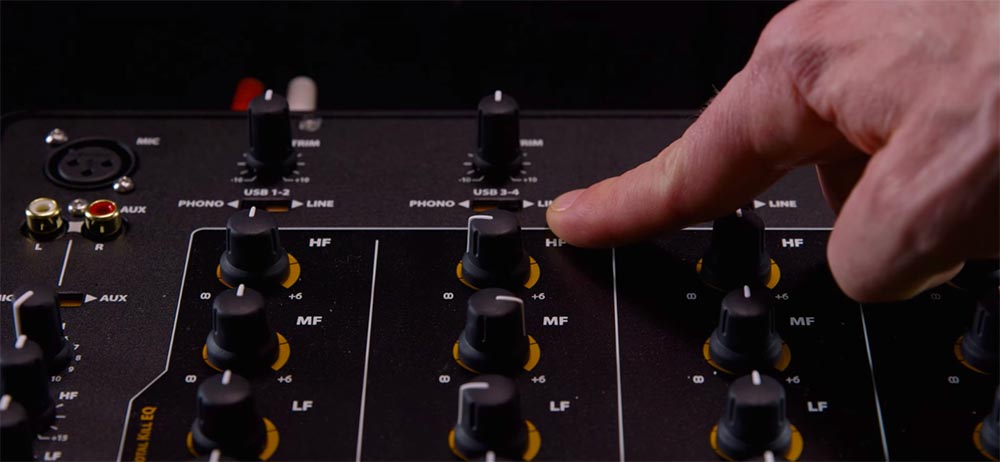
EQ and filters are the central creative control of a DJ mixer. They allow you to shape the audio signal, blending them together harmonically to overlap elements of each tune. EQs are usually 3-band which would be:
- High-end/Highs – Higher frequencies include percussion and synths.
- Mids – Mid frequencies include synths and drums, e.g. snare drums and other deeper percussion.
- Lows-end/Lows – Lows mainly include the bass and other deeper sounds.
Some EQs are however two-band which would include one control for highs and high-mids and another for lows and low-mids. This is rare on DJ mixers but is found on some controllers, e.g. the Numark PartyMix.
Filters
Filters are a type of EQ, they usually gradually either high-pass a track, e.g. fade out the lower frequencies or low-pass a track, e.g. gradually fade out the high frequencies. This creates a ‘sweeping’ effect.
Cue, Loop, and FX
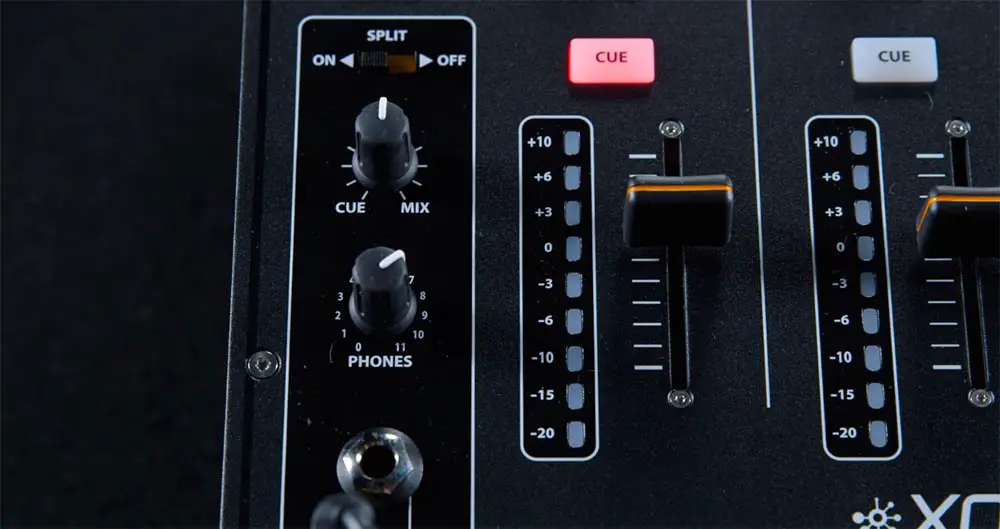
These are all non-essential features but are very common on modern DJ mixers. They add further means to control your music.
Cue – The main cue button allows you to hold a particular beat. You can count down on the cue ‘1, 2, 3, 4’ before pressing the play button on the 1st beat of the next bar to drop a tune in on time.
Other cue buttons, the hot cue buttons, take you to a particular part of a track that has been marked, either on the deck itself and stored in its memory or on the track’s RekordBox file, etc. Hot cues allow you to navigate to a part of the track at the touch of button meaning you don’t have to remember where your mixes stop and start, etc.
FX – FX buttons allow you to quickly trigger FX from your mixer. Mixers like the Pioneer DJM series usually have an FX section with selectable FX that are controllable via a few buttons.
Loop – Looping allows you to take a section of a track, e.g. a 4 bar section, and loop it continuously. This allows you to line up other tunes, buy time to solve a problem or find a track or simply to keep a section of a mix going for a bit longer. It can also be used creatively to beat-repeat or stutter a tune during a build up.
Re-Cap: 4 Steps to Set Up Your Mixer
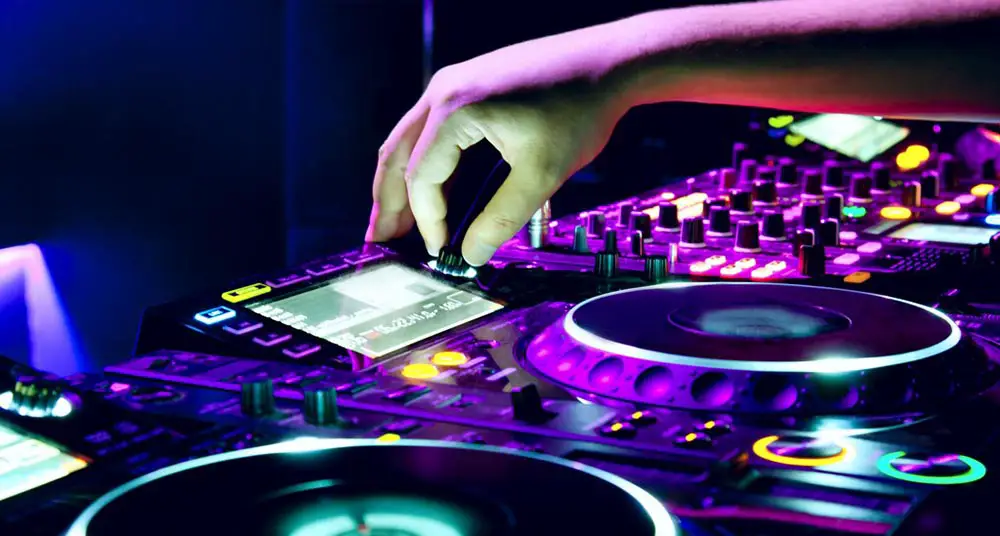
1. Connect your cables
Mixers have two main connections, inputs and outputs. Connect your decks into the inputs and make sure you select phono or line appropriately. Line is used for digital inputs, e.g. CDJs and phono is used for analog inputs, e.g. vinyl turntables.
Plug your speakers into your outputs, these will either be XLR, RCA or more rarely, jack. There is usually at least 2 outputs, the main output and the booth output. Make sure you’ve worked out what sort of cables you need for your speaker system.
2. Set your gains
Gains are important for staging your volumes. Gains should be set to be as loud as possible without pushing the meters too high into the red. Around 1/3rd up is often a good place to start. Once your gains are set, leave them as they are and keep an eye on them, only turn them up if you really need to, e.g. a particular tune is quiet.
3. Set your crossfader
Crossfaders need to be assigned to whatever decks you need them to control. Crossfaders on mixers with more than 3 channels will be assignable to channels, e.g. channels 1 + 2, 3 + 4, etc.
4. Test and Troubleshoot
Start playing your music and see if you get audio out of your speaker system. If you don’t then check the basics
- Cables and connections; phono and line – are the right buttons selected?
- Gains and volumes; are the gains turned up appropriately? Channel faders up, master volume up – for monitors, make sure the Booth control is also turned up
- Crossfader – is it hard panned left or right? Are the assigned channels correct?
If your mixer is set up correctly then the issue is likely to do with your speaker system.
5. Mix!
You may also like: